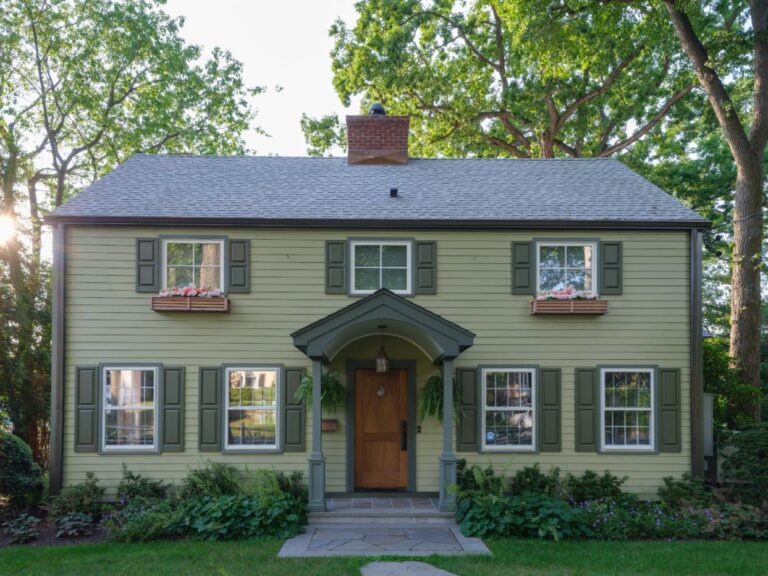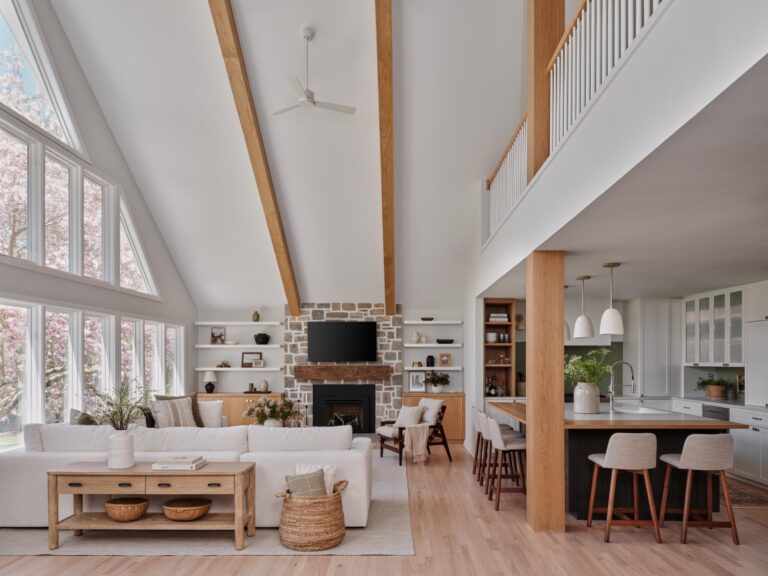Clean Design Partners, LLC founder Claire Paquin has been helping clients up the wow factor in their dining rooms for more than a decade. Here, she shares the four things you must do to create the ideal dining room for entertaining.
Our dining rooms might not be the most frequently used rooms in the house but when the family or friends gather together for holiday dinners, special occasions or just a Friday night wine tasting, it’s nice to have a special room to go to that makes whatever you’re gathering for, feel a little more special.
Claire Paquin, founder and principal designer at Clean Design Partners, LLC, in Scarsdale, NY, has been helping clients in Westchester County, NY, and beyond create well-designed spaces since 2008 when she launched Clean Design. The Wall Street trader-turned-designer has a natural knack for finding tailored design solutions for all her clients.
Paquin starts by getting to know the client’s likes and dislikes and what the room will be used for most often. From there, she pulls together a number of options. “I see where they go, and think like they think, and try to make it so clients are very comfortable in the space.” That’s not to say Paquin doesn’t also guide her clients to make smart design decisions. While design is four parts creativity and expression, it’s also one part calculation and her math brain loves that part, too! “I love getting into the weeds with my layouts and elevations and things like that, so I really enjoy problem solving,” says Paquin, who loves working collaboratively with clients. Here are four keys she shares to creating a dining room that will have you counting down the days until Thanksgiving.
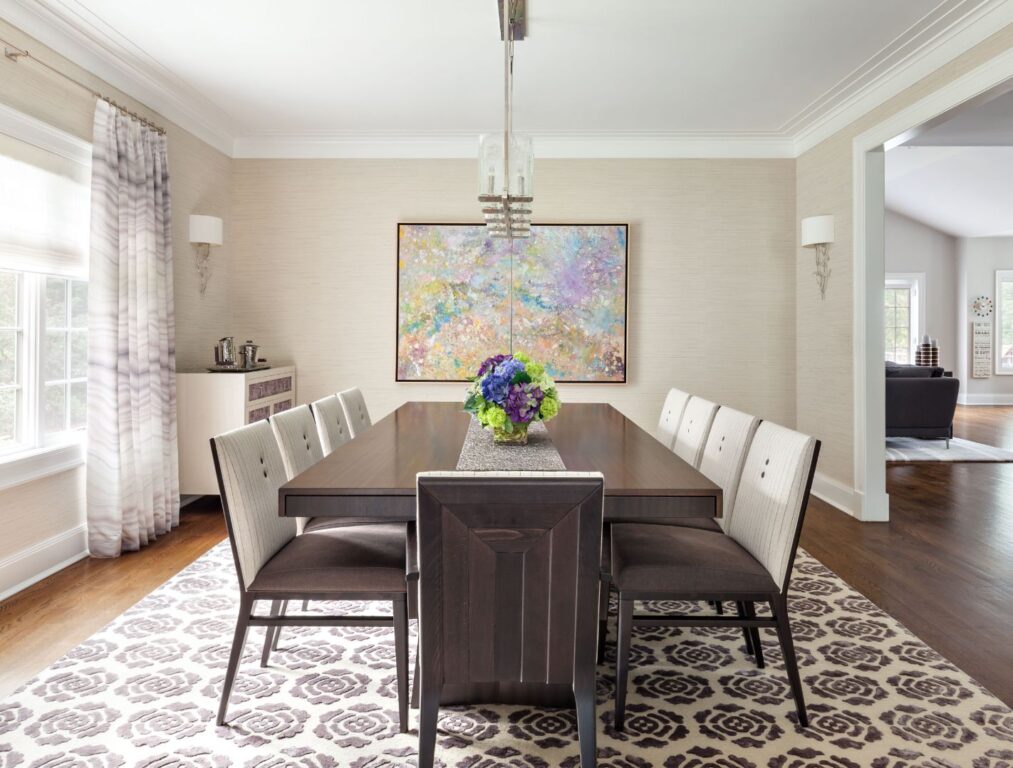
Scale it Right
Professionals understand that size is everything when it comes to design. Paquin says the biggest mistake she sees homeowners making is often choosing appointments that don’t fill the space. “The reason you hire a designer is to get things right the first time,” says Paquin. “Every time I go into a dining room, the rug is too small, chandeliers are hung too high and often improperly scaled, the artwork tends to be too small. I think in general people don’t realize how big you can go.”
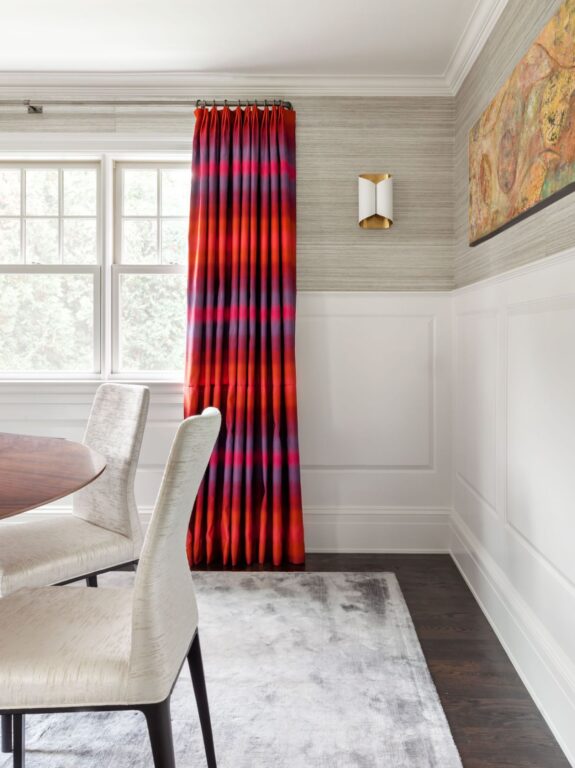
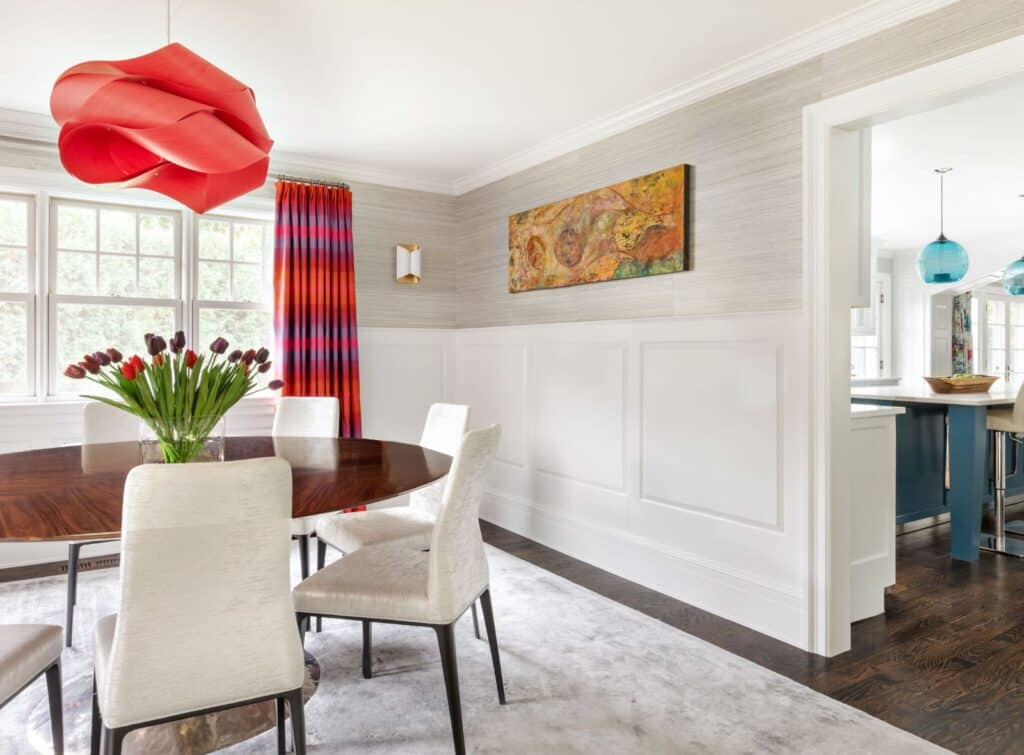
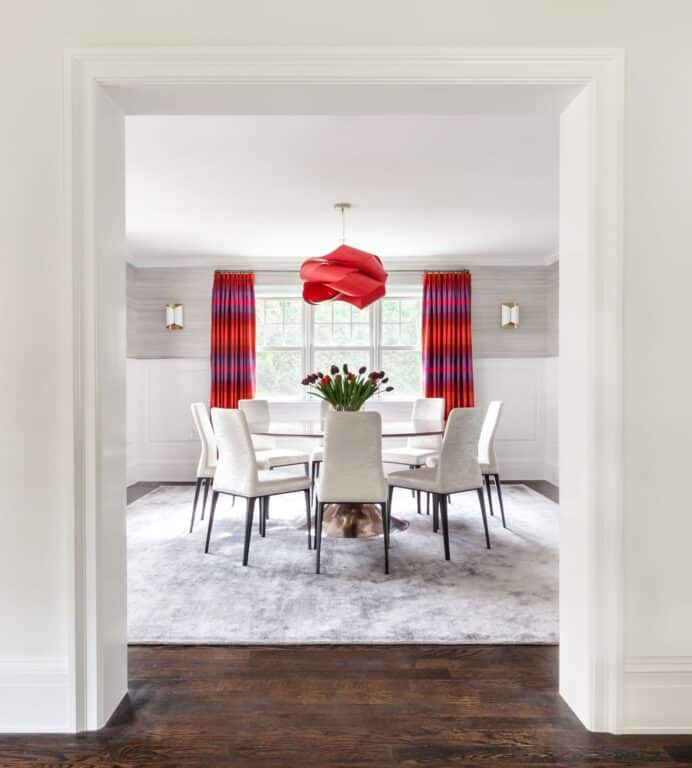
Think Practically
While most rooms in the house have a number of different layouts that may work, dining rooms typically are comprised of three key elements: a table with chairs, a place to serve and lighting. While many people feel a table with leaves allows you to expand for company, Paquin advises to just go for the biggest table you can comfortably fit in the space and skip the leaves. “They make the table rickety, they’re heavy, you have to store them and they warp over time,” she observes.
Do make room for a buffet. “Lately I’ve been doing some floating marble consoles that are anchored into the wall,” says Paquin. “They have no storage, they are super clean but they have the beautiful marble on them for an element of design, and they’re really functional to give you a nice surface to set up a bar or a coffee station or a buffet.”
Make it Shine
“I like something sparkly,” says Paquin of one of her favorite design elements for dining rooms. It can be something as simple as a metallic thread running through the fabric on an upholstered chair or in the drapes—or perhaps in the chandelier.

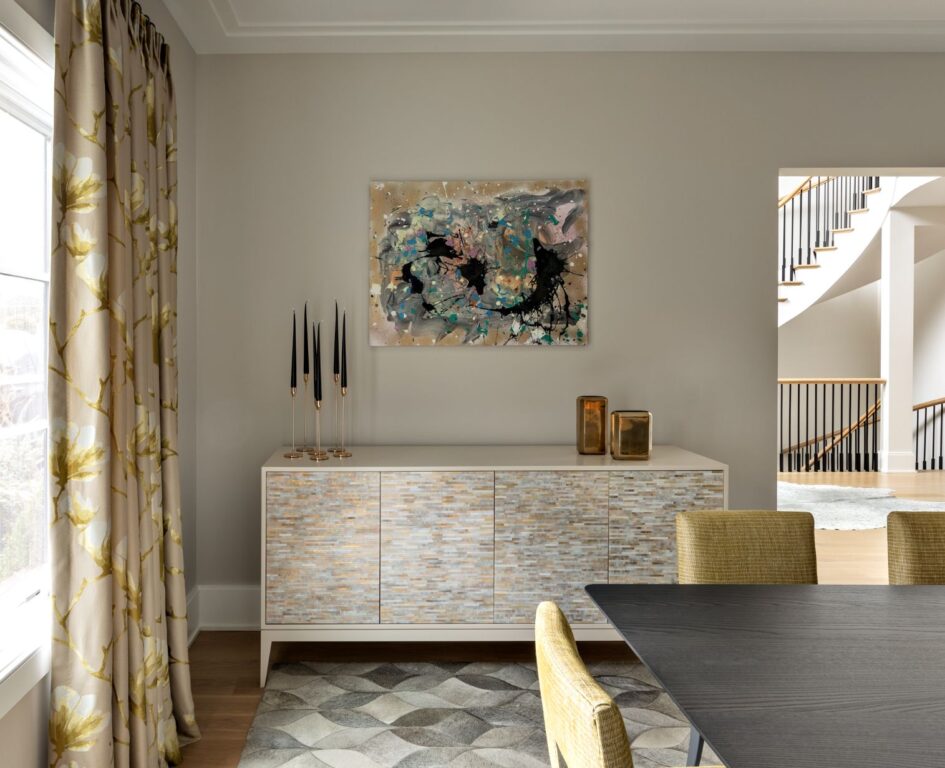
Be Bold
Make your chandelier the focal point—one that makes a statement with or without sparkle. “It has to be evocative of whatever that room is saying,” says Paquin. “It’s one of the best pieces in the dining room.”
More often today, her clients are gravitating towards something a little edgier than traditional options of the past and Paquin says they are becoming her favorite type of client. “People in general are feeling more modern and their dining spaces are becoming more modern,” she says. “They are willing to go a little bit out on a limb because those spaces aren’t used very often. They can really be extraordinary and special.”


